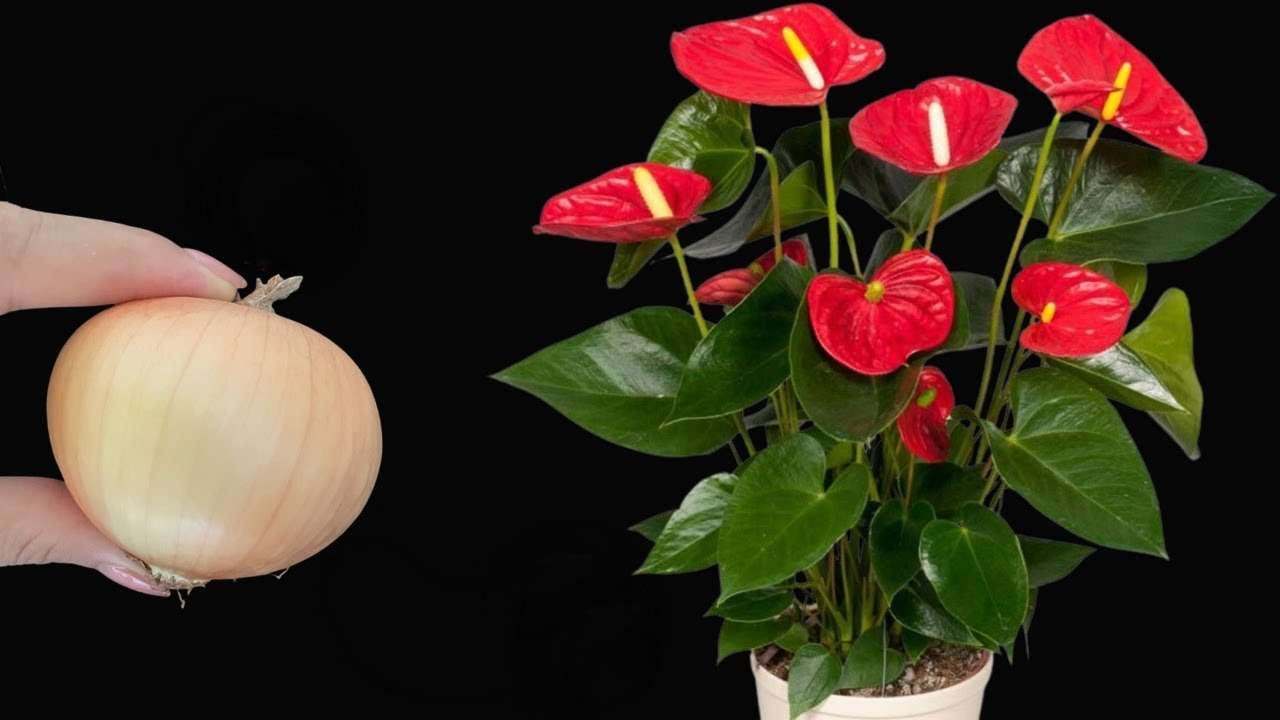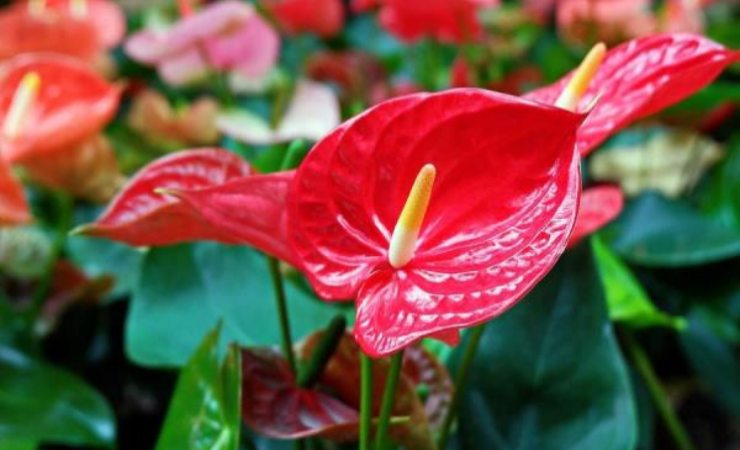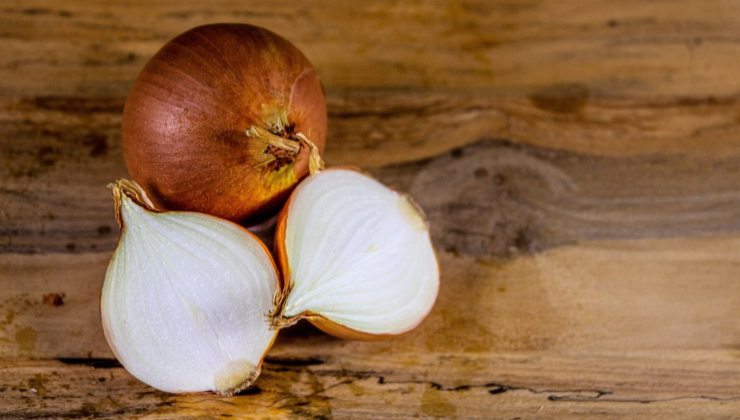
The anthurium plant is widely appreciated by people, since it has very bright and particular flowers and colors. Let’s discover the natural technique to have a constant flowering of this plant.

Perhaps not everyone knows the anthurium or anthurium plant. However, it is becoming increasingly popular in Italian homes. We talked about home, not by coincidence. The anthurium, in fact, is an ideal houseplant and prefers to live indoors rather than outdoors.
The anthurium plant is quite recognizable, even to those who are inexperienced in the field. In fact, it is characterized by the presence of an upturned leaf with a bright and very strong colour . From it, then, a sort of ear with elongated shapes emerges. There is not just one type of anthurium, but in nature there are over 500 of them , each of which can have a different structure and colour.
The plant is native to the tropical areas of Central and South America and, therefore, suffers tremendously from low temperatures . Already below 15°, in fact, it could be in trouble. Planted in a pot inside the apartment and cared for with the right methods, the anthurium can flower massively and make your home space truly alive.
In this article, we let you discover the ideal natural technique to have a perennial flowering of your anthurium plant . Here is the main ingredient you will need to best fertilize this houseplant. Let’s go through all the steps that you will need to follow carefully.
Always flowering anthurium plant – here is the incredible natural technique
Anthurium , as mentioned, needs high temperatures and also a fairly high humidity rate . It will be very important never to allow the sun’s rays to hit the leaves of this plant directly. In fact, they could turn black and the plant – in the most serious cases – could even die.

The soil that anthurium needs to develop at its best must be composed of peat and sand . It will also be important to guarantee the right fertilizer for the anthurium, as for any other plant. As mentioned, the plant needs an excellent level of humidity. Especially in the hot months, therefore, it will be important to ensure enough water for the plant.
Feel the soil and evaluate whether it is dry or moist. This will be the best solution to understand if and when to water the anthurium plant.
Below, we want to mention the extraordinary importance of a completely natural fertilizer . You will avoid buying fertilizer at a gardening store and you will personally create a mixture with incredible beneficial effects for your anthurium plant.
The ingredient you will need to have excellent and constant flowering of your anthurium plant will be onion . Let’s discover the incredible properties of this product for your anthurium plant and how to create a natural fertilizer with it. Here are all the details.
Natural onion-based fertilizer: here’s how to ensure maximum flowering of the plant
We have just mentioned the onion. It not only brings benefits to our body, but also stimulates the growth and flowering of various plants, such as anthurium. Onions have the right level of acidity and allow the soil to increase its pH. Furthermore, they possess vitamin C , phosphorus and potassium , favoring the absorption of the correct nutritional principles by the plant.

Get a jar, cut one or more onions into small pieces and put everything inside. At this point, also add about 500 milliliters of water . Put everything in a blender and operate this tool. The liquid obtained will be very useful for watering the anthurium plant when needed.
It will give greater results than simply watering with water. This natural onion-based fertilizer , in fact, will guarantee the right organic properties to the plant, promoting its growth and constant flowering.
Furthermore, onions also have excellent antibacterial properties and help to best protect the anthurium from the risk of infestation by insects and parasites. They will therefore remove the risk that the plant may get sick.
You will want to water your anthurium plant evenly around the root . You can repeat this operation at least once a week. Your plant will benefit greatly and will always flower.


